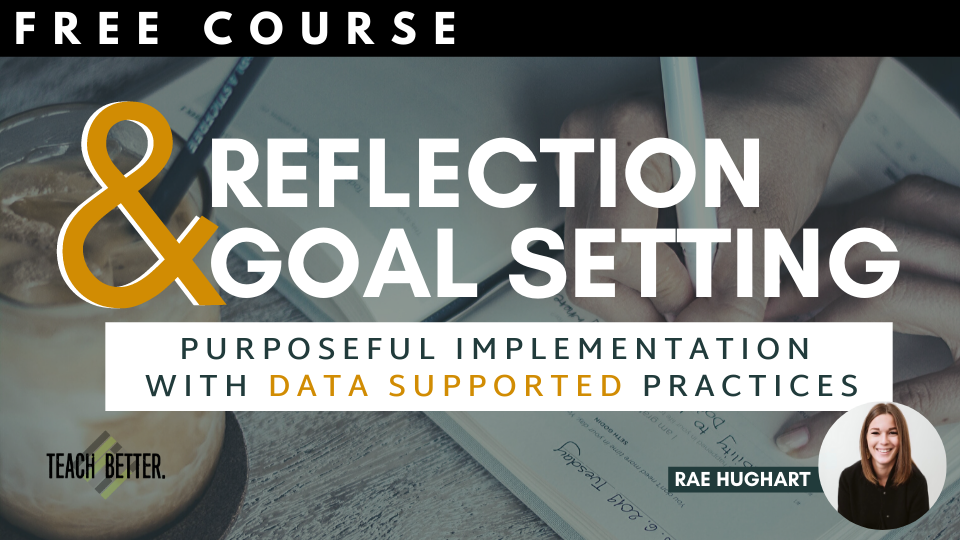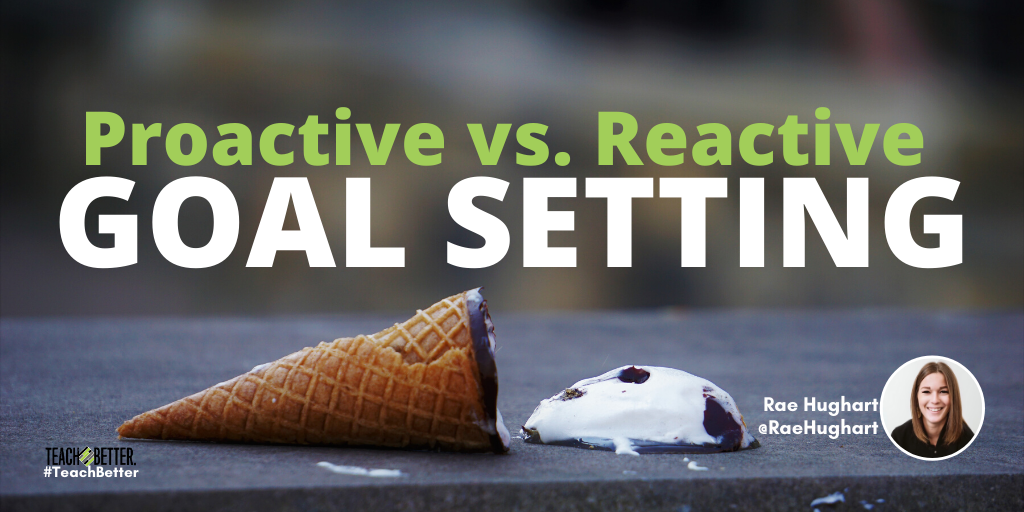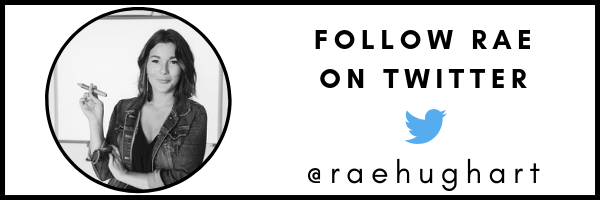TL;DR:
- The importance of being proactive rather than reactive in your goal setting.
- Tips to be more proactive with your classroom goal setting.
- The why behind being proactive.
I knew I had the puzzle pieces. After 4 years in college studying the right approach, the proper progressive philosophy, and the data supported “future” of education. I could rattle off the acronyms with the best of them – SBG, MTSS, RTI, PBL, UDL, etc.
Living the majority of my life labeled as the girl with an LD IEP diagnosis has never been a fond memory for me. To be frank, my future was written even before high school. College was never the path a student like me was going to attempt – much less a master’s degree.
Walking into my first classroom as a certified, passionate educator, I was filled with emotion. I was desperate to do well, but even with all the grit and perseverance I developed to reach this point in my life, I felt as if I had been dealt a poor hand once again.
I felt like I had a bag of puzzle pieces for creating a strong, data-supported classroom.
In the long term, we build supported students who understand the power of their resources. Students eager to solve problems. We create change makers. Click To TweetStudents Deserve More
Have you ever attempted a 1,000 piece puzzle? You take each piece, study it closely, and begin to sort what you have in front of you.
Blue pieces – yeah let’s put those together.
Bright orange? Well ok, put that over here.
As you look at the collection in front of you, sorting seems like the first of a thousand steps that you will take to put each piece in the right order, slowly snapping pieces together. Or at least you hope so.
While I felt confident with the innovative middle school classroom philosophy of the future, I had no idea how to snap together the pieces of each component and implement it with fidelity.
If only I was in that perfect situation – one with supportive administration, collaborative teachers, supportive parents, eager to learn students, financial backing. Then, just maybe, I could take each of these best practices and implement them well, day-in and day-out.
But I wasn’t working in that type of school. I was working in a school filled with students who needed a teacher that believed those circumstances were not the only answer to implementing best practice strategies. They deserved more.
The Missing Element: Being Proactive
The missing element was finding ways to allow the data-supported best practices, like goal setting and reflection, to work for me, rather than utilizing them occasionally in isolation.
Prior to finding my love of this integrated approach, I struggled to be more than fluff. I knew student engagement was essential and goal setting was a useful resource for students. But I found myself extremely inconsistent.
Seemingly every week was a new game. An awesome lesson Monday and a mediocre Tuesday. Then, at the end of the week, I’d be left with a laundry list of “to do’s” which would always include sharing with families and stakeholders what we did in our classroom.
What good is good teaching if it only took place on Fridays and put all the work on the already stressed out educator?
The reality is, fluff ain’t enough! Choose to be proactive with your students’ goal-setting rather than reactive after something occurs! Allow students to help you be a better educator by involving them in the process of taking ownership over the experience.
Ways to be More Proactive with Goal Setting
Set a specific time each day for students to complete a goal setting and reflection post. Carve out the time during the day and prioritize it. Not only will this ensure it gets done, but it’ll also communicate its importance to your students.
Allow students to choose their medium – this builds in a message of student ownership. When they have voice and choice, it becomes theirs.
Give students permission to be creative! They will amaze you with the ways, the means, and the comments they have.
Ask students to answer 3 Key Questions:
- What did you work on today?
- Where is your level of understanding with this content?
- What is your goal for your next work session?
Manipulate your goal setting and reflection time to act as a stakeholder update. You might send home your goal setting page each week or provide stakeholders access to their student account through a tech tool.
Why Be Proactive?
In the short term, these daily opportunities shape confident, self-driven students who are surrounded by community members that act as their cheerleaders while they progress.
In the long term, we build supported students who understand the power of their resources. Students eager to solve problems.
We create change makers.
As a full-time classroom teacher in Central IL, an adjunct professor at Illinois State University, and the Director of Training & Development for the Teach Better Team, my opportunities to work with educators as they pursue more for their classroom are endless.
I find such joy in giving the classroom back to the students sitting in the room and showing educators it’s possible (and manageable) to do so.
I can honestly say, finding how each of these puzzle pieces fit together changed my life for the better.
[scroll down to keep reading]
The Impact
I will never forget the day I received an email from Josh. Josh was a 6th grader I taught earlier in my career who was continually labeled “unreachable.” After he spent countless hours in In-School Suspension or in a juvie cell after trying to rob a Family Video, labeling this student as “lost” was easier than addressing the root cause of his physical and emotional stress.
“new job – thanks” was the title of the email that arrived in my inbox on a February morning a few years ago. As an early riser, I liked to head to school early and drink my coffee while responding to emails. In my personal account, I found an email with a cryptic subject line sent from an unknown address.
When I opened it, I would have put money on it being a spam email. However, it was the opposite. Inside was a short message from Josh. Within his note, he shared with me he had dropped out of high school and moved out of his father’s home with his younger brother. But my favorite part was learning about his new part-time job at Pizza Hut.
He wrote about finding the business card from one of our 6th-grade math units when Pizza Hut sponsored our decimals lessons. The manager was still working there and remembered the unit we had done years prior, he explained.
“So, I did what you always taught us to do. I showed up, shook his hand, and asked for a job. Then, every day, I reflected and tried to do a little bit better.”
Focusing on Better
The idea of growth was never about teaching better than the teacher down the hall or the one I follow on my favorite social media platform. It’s about being our best selves so we can show up well for our students – all of our them. About growing each and every day. It’s understanding that my learning didn’t end after dropping IEP services Sophomore year in high school, or after I earned my undergraduate degree from the college I was never supposed to be accepted into.
Growth is a never-ending daily grind. Pursue Better.
Why? Well, #TeachersDeserveIt. (and everyone else does too!)
About Rae Hughart
Rae Hughart is a Middle-Level Math and Writing Educator in Illinois, the Director of Training and Development for the Teach Better Team, and co-author of the Teach Better book. In 2017, Rae was honored with the Illinois State University Outstanding Young Alumni Award – inducting her into the University Hall of Fame. In 2018, Rae was honored again by the Henry Ford Innovator Award for her work within educators communities to build unity between local businesses and schools. Rae is also a member of the Teach Better Speakers Network.




